From tiny Corgis to chunky Rottweilers, man’s best friend comes in all different shapes and sizes.
But vets now say that Brits’ preferences for pooches are shifting.
New research from the Royal Veterinary College shows that people favour dogs with more pronounced muzzles, less bulging eyes, and longer tails.
The researchers say this shows a growing movement away from the flat faces and short limbs that were once popular for fashionable breeds.
Dr Rowena Packer, senior author of the paper, told MailOnline: ‘For some time, preference has appeared to be for more extreme body shapes, which have been popularised and normalised in the media.
‘However, this is the first evidence that the tide may be turning and the public now prefers less extreme body shapes.’
Across all breeds, participants said that the less extreme body shapes were more attractive, healthier, and made them feel happier.
So, which of the dogs do you think is the cutest? Take a look at the test below to see if you agree with the results.
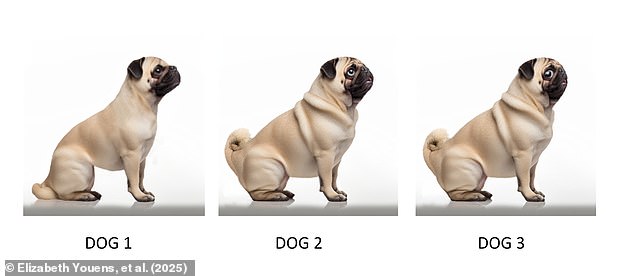
Researchers say that Britain’s taste in dogs is shifting. Which of these three varieties of pug do you find most attractive?

A new study suggests that taste in dogs is shifting away from more ‘extreme’ body shapes and towards healthier characteristics among flat-faced dogs such as pugs
The study examined how people rated three different flat-faced, or brachycephalic, dog breeds: Pugs, English Bulldogs, and French Bulldogs.
Almost 500 participants were shown AI-generated images depicting less extreme, super extreme, or typical versions of the three breeds.
Participants were then asked to rate the dogs in five categories – perceived attractiveness, perceived health, the happiness induced by their appearance, the ethics of breeding, and the desire for ownership.
The results revealed that the least extreme versions of the breeds were rated highest across all categories.
Likewise, typical versions of the breeds were rated higher in all categories than the more extreme versions.
Almost all participants in the study owned dogs of varying breeds, with just over a quarter owning flat-faced breeds.
Owners of flat-faced breeds were consistently more positive about all the dogs, no matter how extreme.
The researchers say this is likely due to dog owners showing a preference for dogs that look like their own.
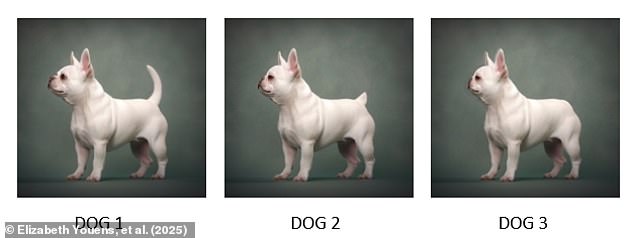
The study asked participants to rate these variations of dogs according to their attractiveness and how happy the pictures made them feel. Which of these makes you happiest?
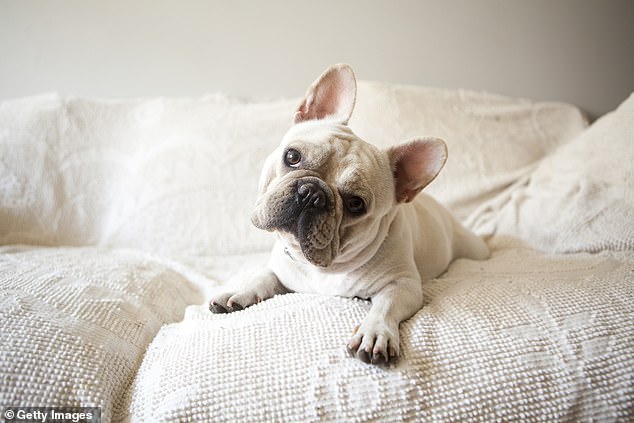
Even owners of flat-faced dogs like French Bulldogs exhibited a preference for longer muzzles, smaller eyes, and more natural tails
However, even these committed owners preferred the least extreme body shapes.
This is good news for dog welfare campaigners who have been arguing for years that fashionable extreme breeding trends were leading to severe health issues.
Dr Packer says: ‘Extreme body shapes are created by artificial selection for genetic mutations.
‘The consequent body shapes break natural biological limits for dogs and lead to a range of chronic, severe disorders that reduce quality of life and lifespan.’
For example, flat faces make it harder for dogs to breathe, while short, curly tails are associated with spinal diseases and paralysis.
The fact that the public is now starting to prefer more natural dogs might be a sign that campaigners’ messages are starting to have an effect.
Dr Paul Manktelow, Director of Veterinary Services at animal charity Blue Cross, says: ‘At Blue Cross we see all too often how pets with extreme features suffer from painful conditions that often require costly surgery to treat.
‘This study provides hope that it doesn’t have to be this way.’
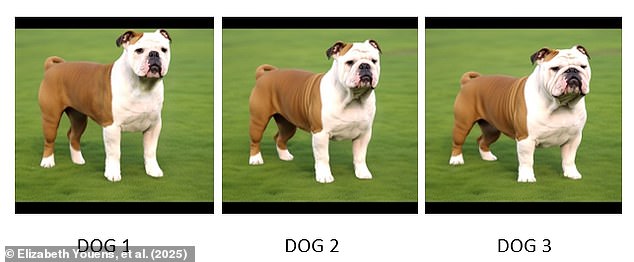
Which of these three versions of an English Bulldog looks the healthiest to you?
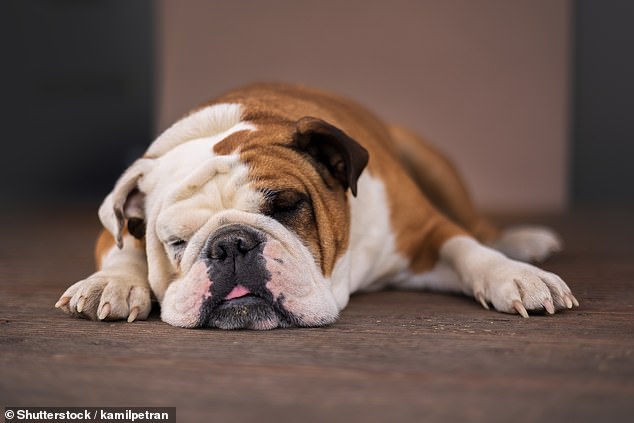
More extreme body shapes, such as flat faces, are associated with a number of health issues and shorter life expectancies
Data from the Kennel Club suggests that registrations for pedigree flat-faced puppies have been falling over the last few years.
However, a study published by the Royal Veterinary College last year found that French Bulldogs were the most popular breed for new owners, making up 7 per cent of all puppies under one year old in 2019.
This reflects how stubborn preferences for these unhealthy breeds can be.
Dr Packer’s previous research found that health problems faced by flat-faced breeds, such as being unable to exercise due to skeletal issues, were normalised by their owners.
One in seven flat-faced owners said ‘nothing’ could persuade them against getting an unhealthy dog.
Likewise, many believed their dogs’ ‘laziness’ was a highly desirable trait, despite this often being caused by breathing or musculoskeletal problems.
Dr Packer says: ‘Many breeders show resistance to changing the body shape of their breed.
‘Given that breeders hold the power to make decisions over which types of dog are bred, and current legislation around extreme breeding is not enforced in the UK, the market is still dominated by extreme dogs, giving the public less choice to express their preferences when acquiring a puppy.’
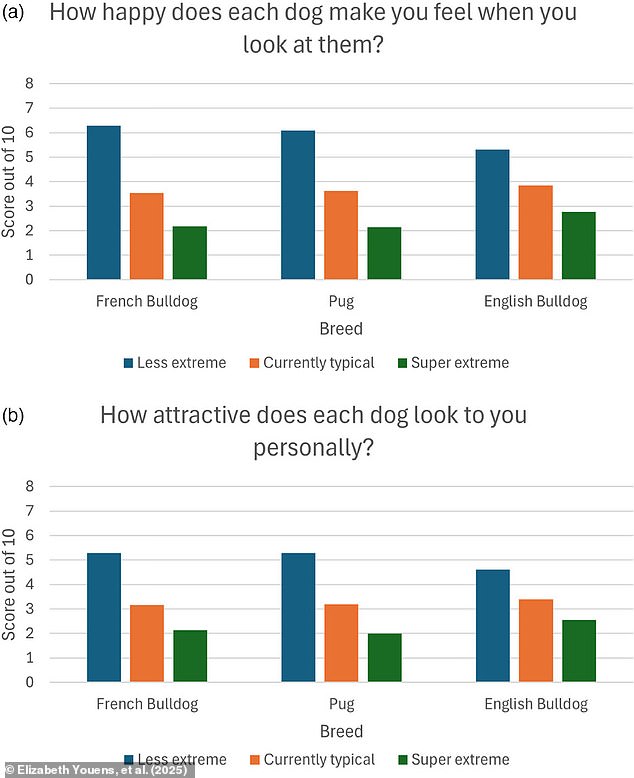
Researchers found that Britons consistently rated less extreme body shapes (dog 1 in the test samples) as more attractive, healthier, and more ethical to breed than more extreme versions
In the future, Dr Packer says she would like to see standards changed to encourage less extreme breeds.
These could include limits on how extreme a dog’s physical traits can be, similar to laws imposed in the Netherlands.
By restricting the extremes of dog breeding, the standard may shift back towards the preferences of most people and start to favour healthier shapes.
‘Prioritising ethics and welfare in breeding over aesthetics is key for a happy, healthy future for dogs,’ says Dr Packer.
